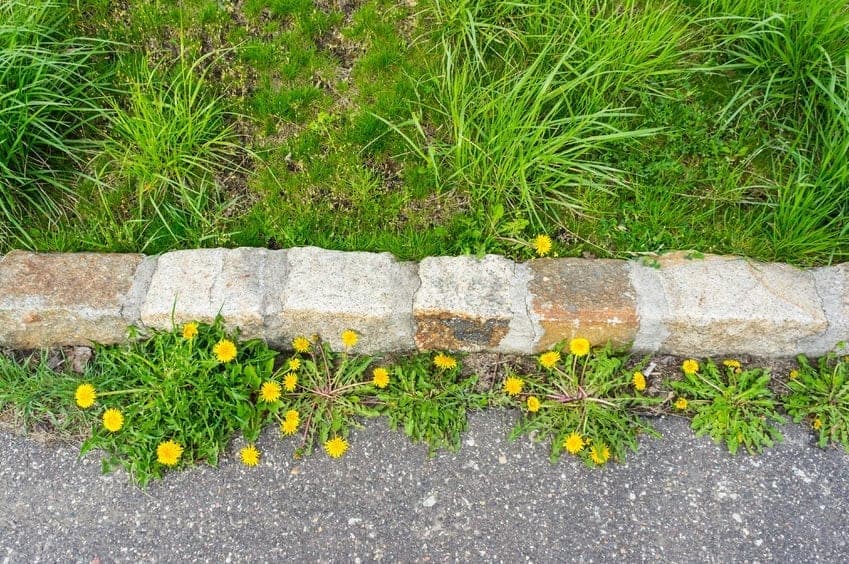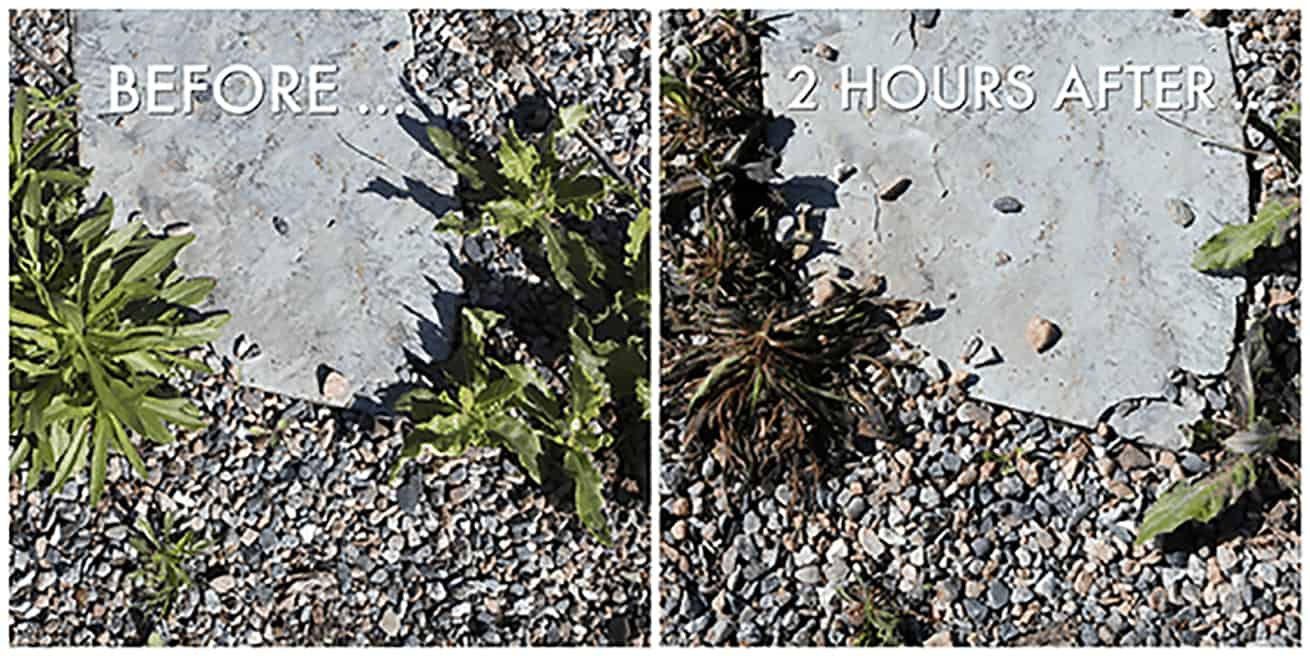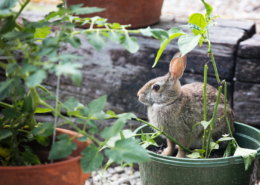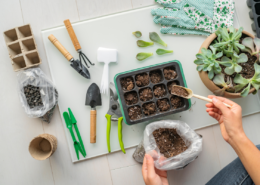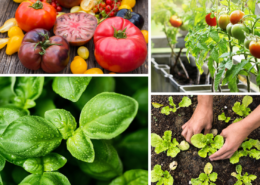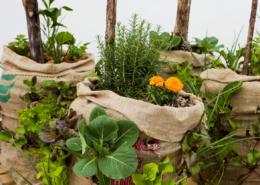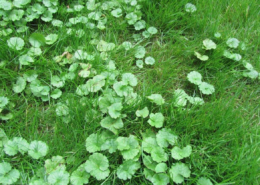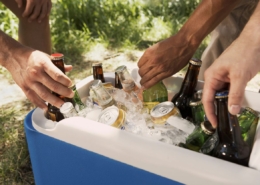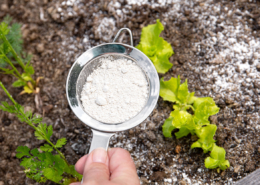How to Make Everyday Cheapskate Weed Killer—Natural, Easy, Better Than Roundup!
I often wonder why is it that weeds have no problem at all with drought-like conditions. They don’t require a thing—not water, fertilizer, or protection from pests and predators. Weeds don’t even need soil. They’re happy to bloom where they are planted even if that is in a sidewalk crack—or asphalt. Weeds don’t complain, don’t need to be babied, and do their best work under the worst of circumstances—the hotter, the better. Weeds never give up. I wish I were more like weeds.
Still, weeds are the bane of every gardener; a problem for every homeowner. Thankfully, I have a super cheap solution that you can make yourself using ordinary household items—Everyday Cheapskate Weed Killer.
In 1970, John Franz, a chemist for Monsanto, discovered that the chemical glyphosate is a potent herbicide that kills just about every kind of plant material imaginable. In no time, the company gave its miracle weed killer the brand name Roundup.
Farmers, especially, went wild for Roundup. Just one problem: It was nearly impossible to kill the weeds without also killing their crops. So Monsanto sent its chemists back to work to develop glyphosate-resistant, or “Roundup ready crops” that have had their DNA altered (genetically modified or GMO) to allow them to be immune to glyphosate. With that, farmers could spray with abandon and not worry about their crops.
To say that glyphosate, Roundup, and GMO foods have become a bit controversial would be, to put it mildly. There are some who say that glyphosate causes cancer in animals, and most likely humans, too. They insist that the side effects of long-term GMO food consumption is producing serious health risks for all living things.
Despite all of this controversy and outcry about issues surrounding Roundup and GMO crops, so far the Environmental Protection Agency (EPA) has found no convincing evidence to force Roundup off the market. It’s a hot-button issue, that’s for sure. However, there is one provable and very compelling reason to not buy Roundup: It’s too expensive!
Even if it were proven beyond a shadow of a doubt that Roundup is safe as water, I still wouldn’t shell out the high price for the stuff. I kill weeds like crazy with kitchen pantry items that are really cheap and non-toxic: white vinegar, ordinary table salt, and dishwashing liquid.
Everyday Cheapskate Weed Killer
First, I will give you the basic ingredients, followed by TWO weedkiller recipes. Choose the one that meets your weed-killing needs. Read carefully, as you may not want to overkill!
Basic Ingredients
White vinegar
Ordinary distilled white vinegar with 5% acidity that is available in any grocery store is cheap and works great. If you can find a higher acidity even up to 30%, it is going to work faster, but the end results will be the same.
Blue Dawn
You will use very little dishwashing liquid, so any brand will do. Use what you have on hand, which for me is always Blue Dawn.
Table salt – Recipe #2 only
Use the table salt you can find in the supermarket. DO NOT USE sea salt or rock salt, Epsom Salts* (not even close to table salt, Epsom salts has a completely different chemical makeup, trust me on that) or anything fancy. DO USE cheap iodized or un-iodized generic salt also known as sodium chloride (NaCl).
Cayenne pepper – Recipe #2 only
This is an ingredient in your spice rack that will add a powerful punch, to be used only in recipe #2 below.
Everyday Cheapskate Weed Killer Version #1
For areas to be replanted
If you have weeds in areas where you will be replanting, this is the recipe you want:
Pour white vinegar into a good quality spray bottle or ordinary garden sprayer and add about 1 – 2 teaspoons (eyeball it, you want just a tiny bit as compared to the amount of vinegar) liquid dishwashing soap like blue Dawn. Apply the sprayer top and follow the instructions on the sprayer to get it ready to spray. That’s it. Seriously, it is that simple.
Pick a hot, dry day to spray weeds until saturated, and they will wilt and shrivel up within hours. Be careful not to spray anything you want to live. However, do not worry about the vinegar killing anything below the soil. Because vinegar will not harm the soil, you can safely replant the area once the weeds have died.
Everyday Cheapskate Weed Killer Version #2
For areas not to grow again
This recipe is for areas such as walkways, driveways, and other areas where you don’t want any living thing to grow again. Into a 32-oz bottle with sprayer top, pour these ingredients:
- 3 cups white vinegar
- 3/4 cup ordinary cheap table salt
- 1/2 teaspoon dishwashing liquid
- 1 teaspoon powdered cayenne pepper
Apply the lid and shake to dissolve the salt. Salt dissolves more quickly in vinegar than in water, but it takes a bit of doing. You need to allow this to sit for a few days as it will take time for the salt and cayenne to dissolve.
Using a garden sprayer or other type of spray bottle of your choice to apply to weeds or grass on a dry, sunny day—areas you don’t want to see vegetation of any kind in the future.
The presence of salt in this recipe is what will eventually bring permanence to your weed-killing. The salt will penetrate and leach into the soil. It may take several applications, but in time the presence of salt will “sterilize” the soil in this area so that nothing will grow there (see Salting the earth.) Plan well before you take this semi-permanent route.
These homemade weed killer recipes are not only cheap, both are completely non-toxic to humans and animals. In fact, except for the soap (not toxic, but not very tasty), these are ingredients many of us use to cook with.
*Note on Epsom Salts
Please, do not substitute Epsom Salts for table salt in these recipes! They’re two different things. Epsom Salts (a singular noun) consists of magnesium sulfate. Table salt is sodium chloride.
Epsom Salts supplies two essential plant nutrients—magnesium and sulfur. People have used magnesium and sulfur for decades and decades to feed plants such as roses, tomatoes, and peppers. Epsom Salts does not kill plants. It makes them grow better. Why would you put them in a weed killer? To make your weeds grow faster? A word to the wise should be sufficient.
First published: 6-13-18; Revised 9-27-23
If the PRINT button below malfunctions for some, consider printing from your browser’s “Reader View.” -mh
Everyday Cheapskate participates in the Amazon Services LLC Associates Program, an affiliate advertising program designed to provide a means for us to earn from qualifying purchases at no cost to you.





